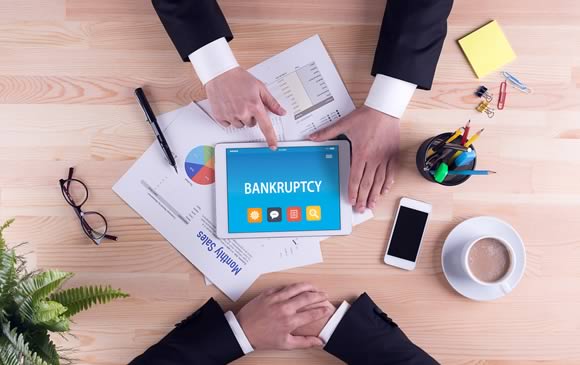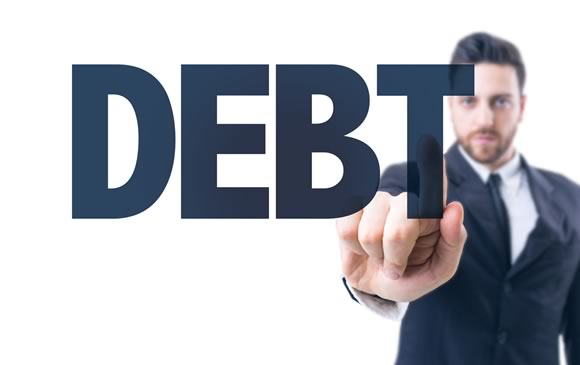The reports are in and the numbers are on the rise. More consumers are declaring bankruptcy this year than compared to last year.
Bankruptcy hurts the consumer and the creditor. It may provide the borrower the emergency financial relief they need, but it leaves a burden of debt with the original lender.
Read through this article and see how bankruptcy is affecting consumers in America. Then, find out how that correlates to the creditor/lender.
After you take a look at the data, continue reading for answers to debt collection questions. We have advice on what you can do before and after one of your clients declares bankruptcy.

Just because bankruptcies are on the rise doesn’t mean you have to let your debts go unsettled. We’ve put together this article to educate and help you with your debt collection. If you have any questions or need further help, please contact us right away!
Bankruptcies Spike in October 2017
In the most recent edition of a report published by the American Collector Association International (ACA) bankruptcy filings are up from September 2017 to October 2017. Total filings of bankruptcies have increased 8%.
There are more bankruptcies at the end of 2017 than the previous year. With about a 2% increase from last year in reported bankruptcies, 64,579 cases of consumer bankruptcy were filed in October 2017. About 3,075 cases of bankruptcy are filed on a daily basis.
For a full look at last year findings and how they relate to the debt collection economy, visit the American Bankruptcy Institute. They have the full report and additional data available here.
Not Everyone Can Afford to Go Bankrupt
Although bankruptcy can help relieve immediate financial burden, it’s not free.
Samuel J. Gerdano, Executive Director of the ABI, says that consumers and business face a barrier to entry in filing for bankruptcy.
“High filing costs remain an obstacle for distressed consumers and businesses” says Gerdano. “The recommendation of the ABI … (is) to remove barriers for struggling businesses and families seeking a fresh start through bankruptcy.”
The exact cost to file for bankruptcy depends on what Chapter you’re filing under. It may also depend on special requirements named by the state you’re filing in.
Nevertheless, here’s a look at the general costs of filing for bankruptcy:
– First, you pay a filing fee. Chapter 7 bankruptcies cases cost $335 and Chapter 13 bankruptcies cases cost $310.
– It’s free to convert your Chapter 7 bankruptcy to a Chapter 13 bankruptcy. However, it costs $25 for convert from a Chapter 13 to a Chapter 7.
Filing fees are just the start of bankruptcy expenses. Credit counseling, financial management classes, and attorney fees are all additional costs associated with declaring bankruptcy.
Can I Collect on a Debt Once the Debtor Declares Bankruptcy?
If the person who’s in debt to you goes bankrupt, you’re no longer eligible to collect that debt.
Bankruptcy voids almost all debts. There are very few exceptions to bankruptcy laws – namely, student loan debts. But credit card companies and private lenders may not collect on the original debt once bankruptcy has been filed.
There are some courses of action still available to the lender. Depending on the debt, the lender may be able to take possession of items belonging to the debtor. This is known as “repossessing collateral.”
For example, if you extend a line of credit so that someone can get an auto loan, but then they file bankruptcy – you may be eligible to repossess the automobile they obtained via your loan.
If one of your clients has recently declared bankruptcy, you may have other options available to you. Contact us at Burt and Associates. Tell us what you’re dealing with, and we’ll help you find a solution.
Secure Your Collections and Settle Debts Before Bankruptcy Happens
Once bankruptcy is declared by a person or business, the creditor or debt collector may no longer continue correspondence with the borrower to try and get their money back.
In other words, you can’t contact someone about their discharged debt after they’ve declared bankruptcy.
So, what course of action can you take? Should you just be left holding someone else’s bill?
The first thing you need to do is evaluate the credit risk of a borrower. The best offense is a good defense. You want to know how likely the borrower is to repay.
Next, if you notice a client’s credit is getting slippery, or you have reason to suspect their ability to repay you, it’s time to put an eye on them. At Burt and Associates, we use our Bankruptcy Watch program to forecast trouble and advise our clients correctly.
The best thing to do is try and settle your debts before bankruptcy happens. Arbitration by a qualified third party can help you reach a payment agreement with your indebted client. You want a diplomatic professional that can see both sides of the situation – and help you get paid before your client goes bankrupt.












